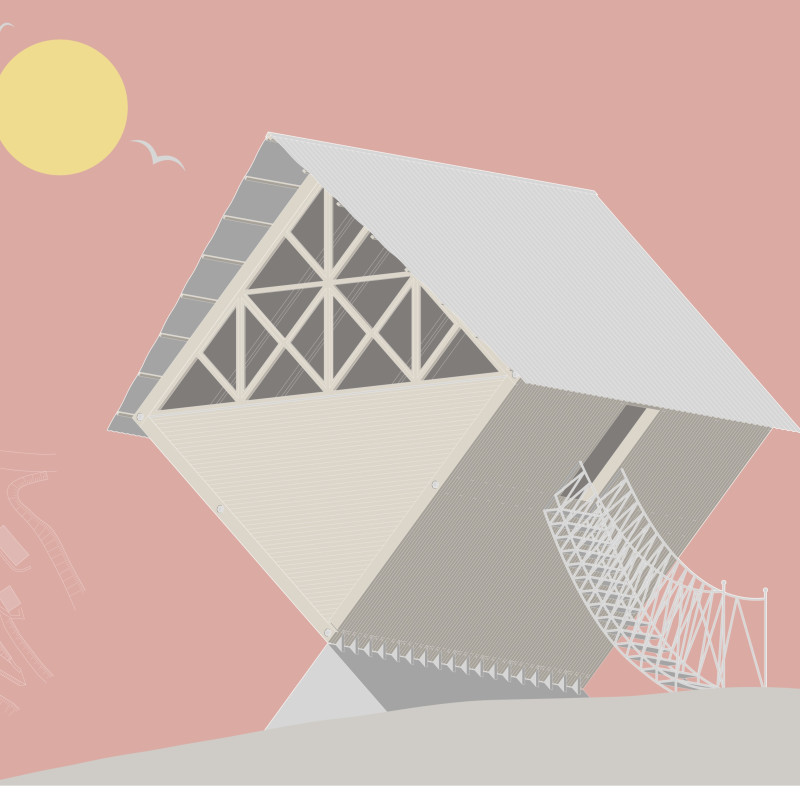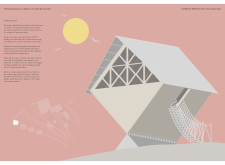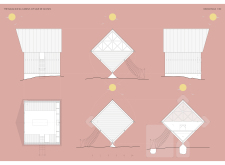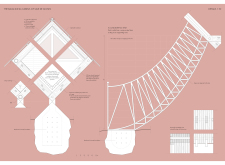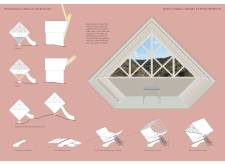5 key facts about this project
The Balancing Cabins of Vale de Moses are located in a tranquil area, designed to function as retreat spaces that reflect the idea of balance found in yoga. These cabins present a unique design where they seem to hover just above a concrete foundation, creating a strong link to the natural surroundings. The architecture not only provides shelter but also encourages a sense of calm and connection to nature.
Structural Design
The design features a thoughtful arrangement of four cabins positioned on the southern edge of a stone terrace. This layout maximizes the views available to occupants and creates an inviting environment. The cabins' elevation gives a light and airy feeling, achieved by a concealed truss system that resembles a hanging stair. This innovative engineering solution contributes to the stability of the cabins while allowing them to appear weightless.
Material Selection
Material choices play a key role in the effectiveness of the design. The foundation is made of reinforced concrete, providing essential strength and durability. In contrast, the walls are built with 160 mm dowel laminated timber panels. This selection improves shear stability while allowing for easier assembly, thanks to diagonal dowels positioned thoughtfully. Openable windows create opportunities for natural ventilation, enhancing the connection between the indoor spaces and the outside.
Sustainability Initiatives
The project includes a grey water system that highlights a focus on sustainability. This system effectively manages water and directs heat and cold radiation upwards, showcasing an awareness of environmental responsibility. Such features reflect not only an efficient use of resources but also support the overall goals of the cabins.
Interior Experience
Inside, the cabins feature angled walls that generate a spacious and open feeling. This design choice adds to the visual appeal while creating a calm and introspective atmosphere. The layout encourages a sense of retreat and reflection. Each cabin serves as more than just a shelter; it becomes a space for users to engage with their surroundings and find their own balance.


